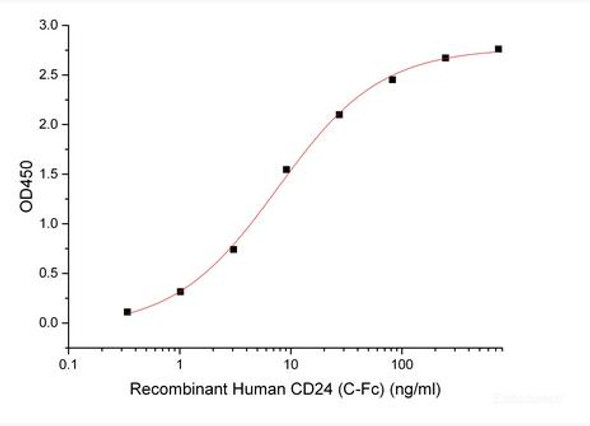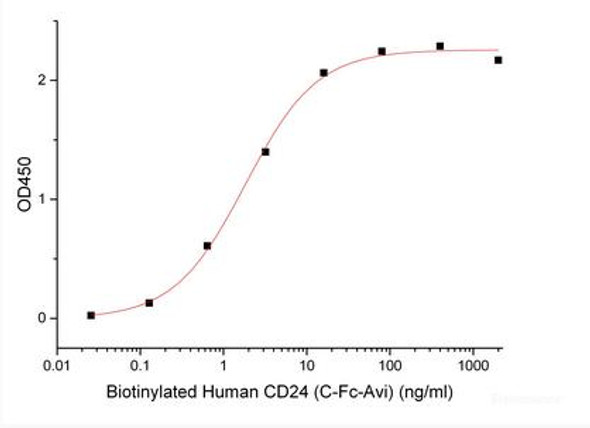Description
| Product Name: | Recombinant Mouse Signal Transducer CD24/CD24 (C-Fc) |
| Product Code: | RPES6664 |
| Size: | 10µg |
| Species: | Mouse |
| Expression Host: | HEK293 Cells |
| Synonyms: | Signal transducer CD24, Small cell lung carcinoma cluster 4 antigen, CD24, CD24A |
| Mol Mass: | 29.6 kDa |
| AP Mol Mass: | 48-52 kDa |
| Tag: | C-Fc |
| Purity: | > 95 % as determined by reducing SDS-PAGE. |
| Endotoxin Level: | < 1.0 EU per μg of the protein as determined by the LAL method. |
| Bio Activity: | Testing in progress |
| Sequence: | Asn27-Gly53 |
| Accession: | P24807 |
| Storage: | Generally, lyophilized proteins are stable for up to 12 months when stored at -20 to -80°C. Reconstituted protein solution can be stored at 4-8°C for 2-7 days. Aliquots of reconstituted samples are stable at < -20°C for 3 months. |
| Shipping: | This product is provided as lyophilized powder which is shipped with ice packs. |
| Formulation: | Lyophilized from a 0.2 μm filtered solution of PBS, pH 7.4. Normally 5 % - 8 % trehalose, mannitol and 0.01% Tween80 are added as protectants before lyophilization. Please refer to the specific buffer information in the printed manual. |
| Reconstitution: | Please refer to the printed manual for detailed information. |
| Background: | Signal Transducer CD24 is a heavily and variably glycosylated GPI-linked sialoprotein. Human CD24 is expressed on B lineage cells and granulocytes, on epithelial, neuronal, and muscle cells, and on a range of tumor cells. CD24 expression is regulated during lineage development and with the activation of various cell types. Antibody crosslinking of CD24 enhances the induction of apoptosis in B and T lymphocytes which contributes to negative selection and the induction of immune tolerance. CD24 on antigen presenting cells cooperates with B7 molecules in the costimulation of T cells. CD24 associates in cis with Siglec10 and with the danger-associated molecules HMGB1, HSP70, or HSP90 which are released from necrotic or damaged cells. Formation of these ternary complexes fills a protective role: the resulting Siglec10 signaling inhibits inflammatory responses that are otherwise induced by extracellular DAMPs. |






